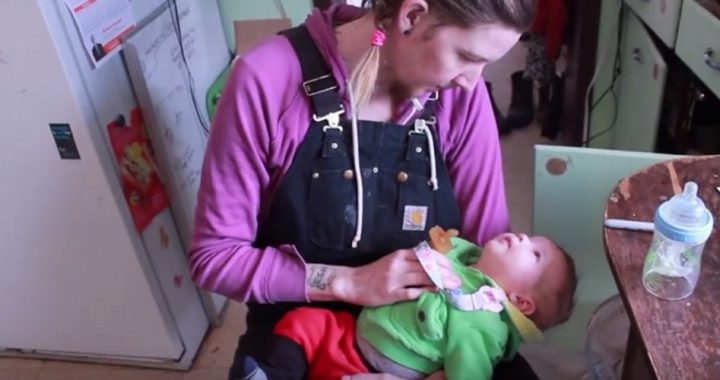
A four-year-old knows the difference between boys and girls, but some parents today apparently don’t. An example is Kori Doty, who refuses to reveal the sex of her baby and has successfully lobbied the Canadian government to issue a “health card” with the sex listed as “U,” presumably meaning “unknown.”
Doty is another individual claiming to be “transgender,” with her adopted classification being “non-binary trans.” “Non-binary,” mind you, “is a term to describe people whose gender identity falls outside the categories of man and woman,” writes CNN.
The baby, Searyl Atli Doty, “was born in British Columbia, ‘outside the medical system,’ and did not undergo a genital inspection after birth, campaign group Gender Free I.D. Coalition said in a statement. The group’s vision, stated on its website, is ‘to remove all gender/sex designations from identity documents,’” CNN also reports.
While an official birth document without sex listed may be a world first, Doty’s dubious decision isn’t. Toronto couple David Stocker and Kathy Witterick refused to divulge the sex of their child, “Storm”; British parents Beck Laxton and Kieran Cooper wouldn’t reveal that their child, Sasha, was a boy until last year, when he was five; and a young Swedish couple have, reports tell us, only disclosed the sex of their child “Pop” to his siblings. And pop goes the sanity.
These people are part of a growing movement concerned with placing children in a so-called “gender straightjacket.” As Pop’s mother opined, “It’s cruel to bring a child into the world with a blue or pink stamp on their forehead.” As for Doty, who prefers using pronouns such as “them” and “they,” she told the CBC that she’s “recognizing them [Searyl] as a baby and trying to give them all the love and support to be the most whole person that they can be outside of the restrictions that come with the boy box and the girl box.” Doty says that she wants the child to decide his own “gender” when he’s older. Yet there’s a contradiction here.
If we’re not to place a child in a box — if not limiting him is such an imperative — why identify him as a “baby”? I’ll explain.
This “transgender” phenomenon began largely with the mainstreaming of “gender dysphoria” (GD), the sense that, to put it in layman’s terms, you’re a member of one sex stuck in the opposite sex’s body. Now, of course, powerful social forces are lobbying to have GD officially declassified as a mental disorder; unofficially, this effort is already bearing fruit in the media, academia, and entertainment.
Yet just as psychologists define GD, they also tell us about “species dysphoria,” the sense that you’re an animal stuck in a human body. Supposed examples are a Norwegian woman insisting she’s a cat and a Texas girl claiming canine status. So why put Searyl in a homo-sapiens box and label him a baby, by which Doty presumably means a human child? Maybe Searyl will decide he’s a gazelle, a ferret, a gerenuk or a Pink Fairy armadillo.
This is a serious point — at least as serious as the notion of “gender neutrality.” After all, to raise a child as human is to limit him, to impose certain values on him. It means putting him in clothes, having him eat with utensils; and teaching him language, customs, manners and everything else befitting a human.
Of course, such imposition is unavoidable because to raise a child in any way is, by definition, to limit him. As philosopher G.K. Chesterton put it in What’s Wrong With the World, “Mr. [George] Bernard Shaw once said that he hated the idea of forming a child’s mind. In that case Mr. Bernard Shaw had better hang himself; for he hates something inseparable from human life.” In other words, it isn’t a matter of whether you’ll “limit” and form your child — only in what ways.
So we raise a child in a human-specific manner because he is a human, not an aardvark. Likewise, sane people raise a boy in a sex-specific manner because he is a boy, not a girl. Every cell in his body is XY, the male genotype; every cell in a girl’s is XX. Of course, there are abnormalities, such as Klinefelter syndrome (XXY), which are the exceptions that prove the rule — of normality.
By the way, the comment of the week on this matter was made by a Daily Caller reader who wrote, “I, too[,] was a male trapped inside a female body … then my mother gave birth.” If only what was happening to poor little Searyl were so funny, and not the tragic child abuse that it is.
Image: Screenshot from YouTube video of Kori Doty and baby Searyl



